Saugerties Cantine Fields Pollinator Meadow
Welcome to the CAC Pollinator Meadow
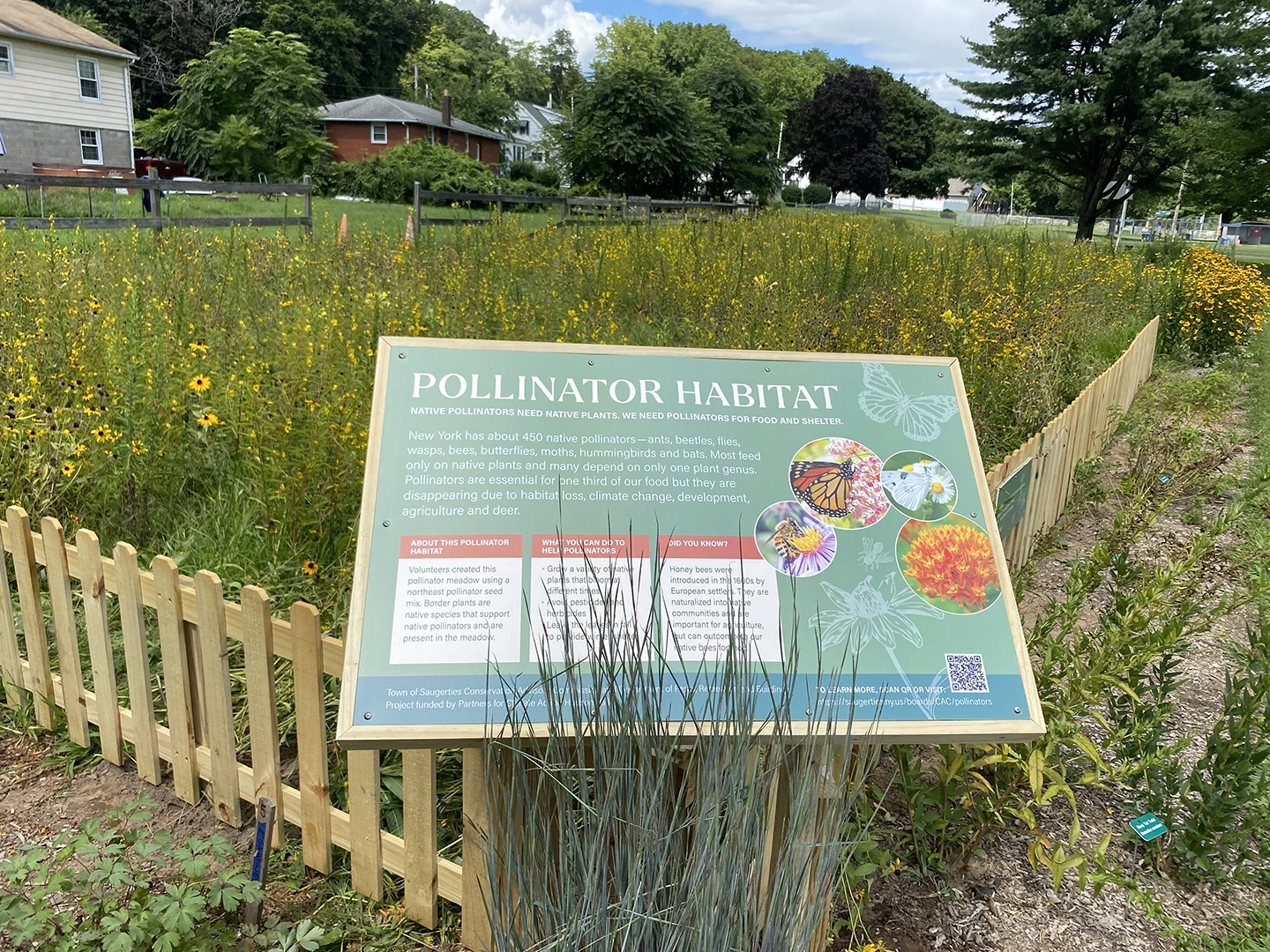 Enjoy a visit to the newly created Pollinator Meadow in Saugerties at the Cantine Field sports complex. You’ll find the meadow at the junction of Bob Moser Drive and Market Street behind the Veterans Memorial Monument.
Enjoy a visit to the newly created Pollinator Meadow in Saugerties at the Cantine Field sports complex. You’ll find the meadow at the junction of Bob Moser Drive and Market Street behind the Veterans Memorial Monument.
You’ll see native plants, flower-filled in season, and pollinators - bees, butterflies, beetles, wasps, moths, ants, flies, hummingbirds – all who call the meadow home. These tiny creatures bring life to the meadow with their buzzing energy. All while hard-at-work players and coaches practice and compete only feet away!
Spend some time watching. You may notice many more tiny colorful pollinators. You might even see flies with protective coloration that make them look like bees. And don’t worry, you can safely watch busy bees visiting flowers. Most native bees are solitary nesters and not aggressive.
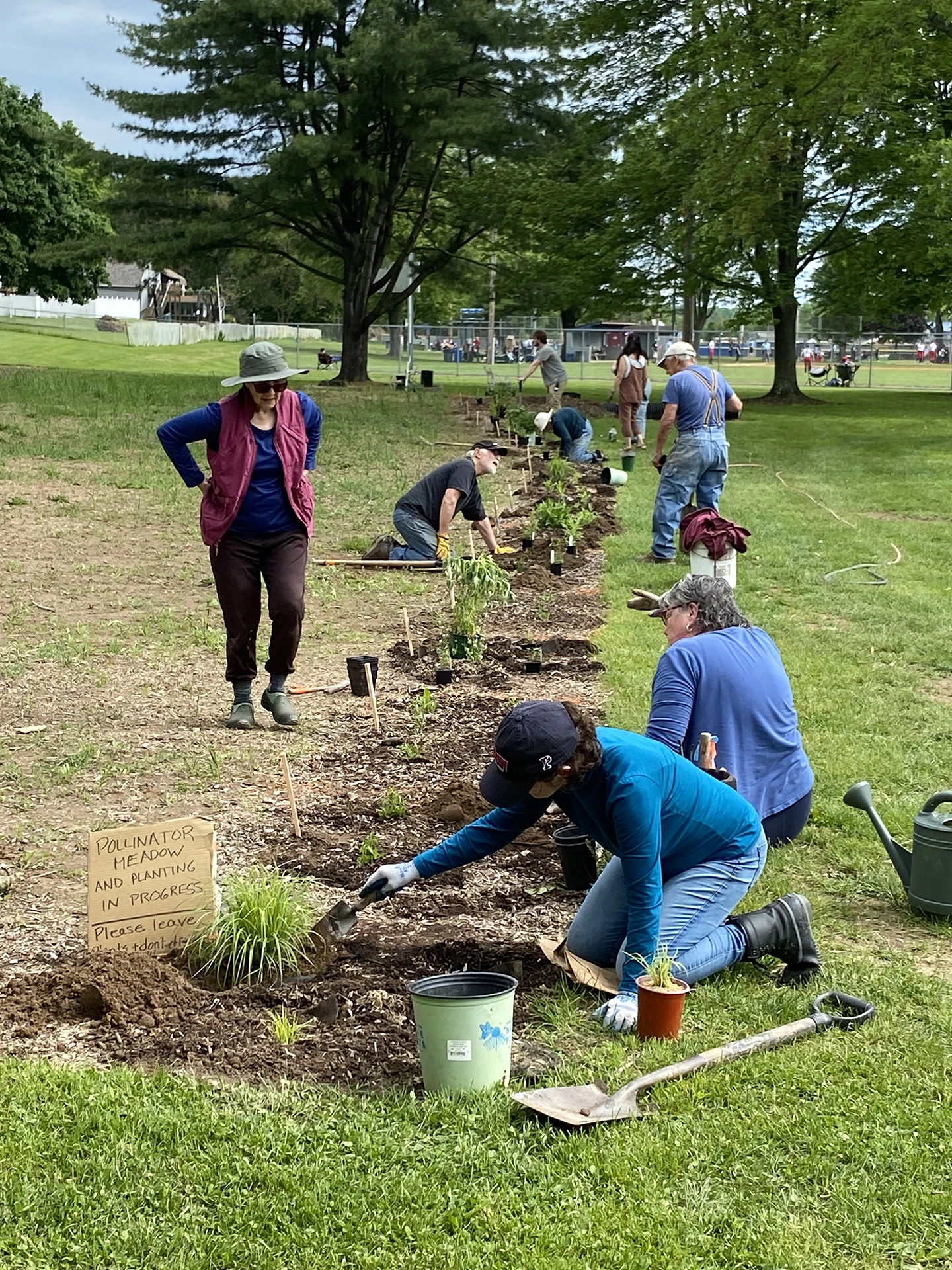 Who Created this Pollinator Meadow?
Who Created this Pollinator Meadow?
The Conservation Advisory Commission (CAC), with help from CAC volunteers, local volunteers and the town’s Department of Parks, Recreation and Buildings staff with funding from Hudson Valley Partners for Climate Change. Once Parks staff prepared the site in the late fall of 2023, CAC and volunteers sowed a special mostly native species seed mix and planted native pollinator support plants in the border in the spring of 2024.
Do you know that pollinators are responsible for much of our food such as watermelon, apples and tomatoes? Do you know why pollinators visit flowers and what if there were no pollinators? Keep reading for answers to those questions and other frequently asked questions about pollinators.
What are Native Pollinators and Why are They Important?
New York has about 450 native pollinators – ants, beetles, flies, wasps, bees, butterflies, moths, hummingbirds, and bats. Can you think of any you have seen? Have you noticed tiny insects on flowers?
Native pollinators and plants evolved together and are inter-dependent. Most feed only on native plants and “specialist” pollinators depend on only one plant genus. For example, the small sweat bee (Lassioglossum oenotherae) needs the evening primrose (Oenothera species).
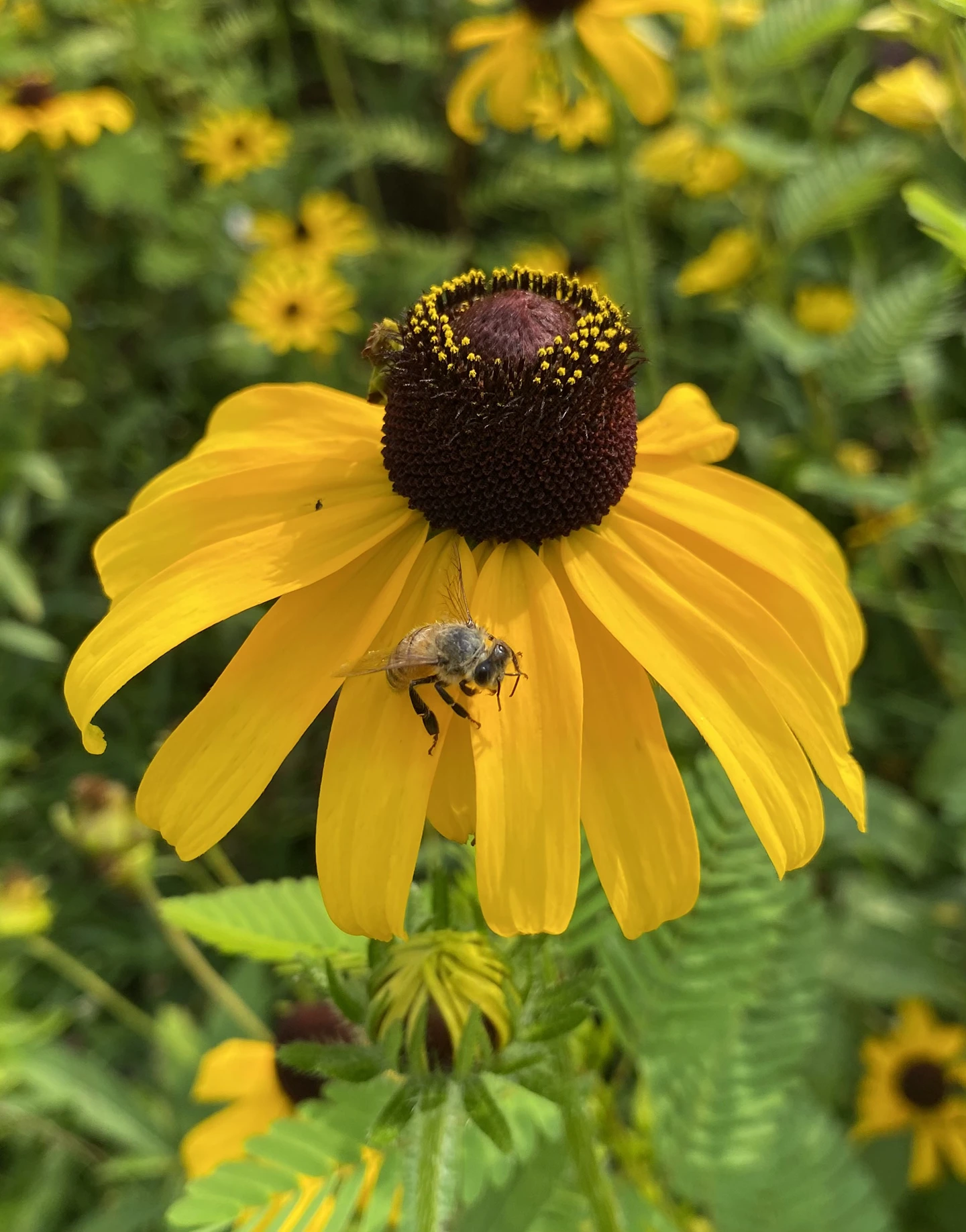 Like flowers, wild bees - and native flies - come in all shapes, sizes and colors, resulting in a finely tuned relationship between certain plants and their pollinators. Other native pollinators like the Eastern Bumble Bee (Bombus impatiens) are “generalists” and take nectar and pollen from a variety of flowers. This is how pollinators from pinhead-size flies to hand-sized moths can pollinate so many different plants. Pollinators are essential but are disappearing due to habitat loss, climate change, development, pesticides, agriculture, and deer.
Like flowers, wild bees - and native flies - come in all shapes, sizes and colors, resulting in a finely tuned relationship between certain plants and their pollinators. Other native pollinators like the Eastern Bumble Bee (Bombus impatiens) are “generalists” and take nectar and pollen from a variety of flowers. This is how pollinators from pinhead-size flies to hand-sized moths can pollinate so many different plants. Pollinators are essential but are disappearing due to habitat loss, climate change, development, pesticides, agriculture, and deer.
Next time you see insects or butterflies hovering around flowers, look closer. Spend some time watching. You will probably notice many more tiny, colorful pollinators! You might even see flies with protective coloration that make them look like bees.
Do Native Bees Sting?
Most native bees are solitary nesters and not aggressive. You can safely watch busy bees visiting flowers. In fact, many native bees lack stingers so they can’t sting you. Most native bees will sting only if stepped on, pinched, or caught in your clothing. Only female bees can sting. Female native bees are solitary and build and tend their nests. They must be able to defend themselves so they can feed and protect their larvae.
European honey bees and native bumble bees nest in colonies and will defend the area around their nests.
Why Do Pollinators Visit Flowers?
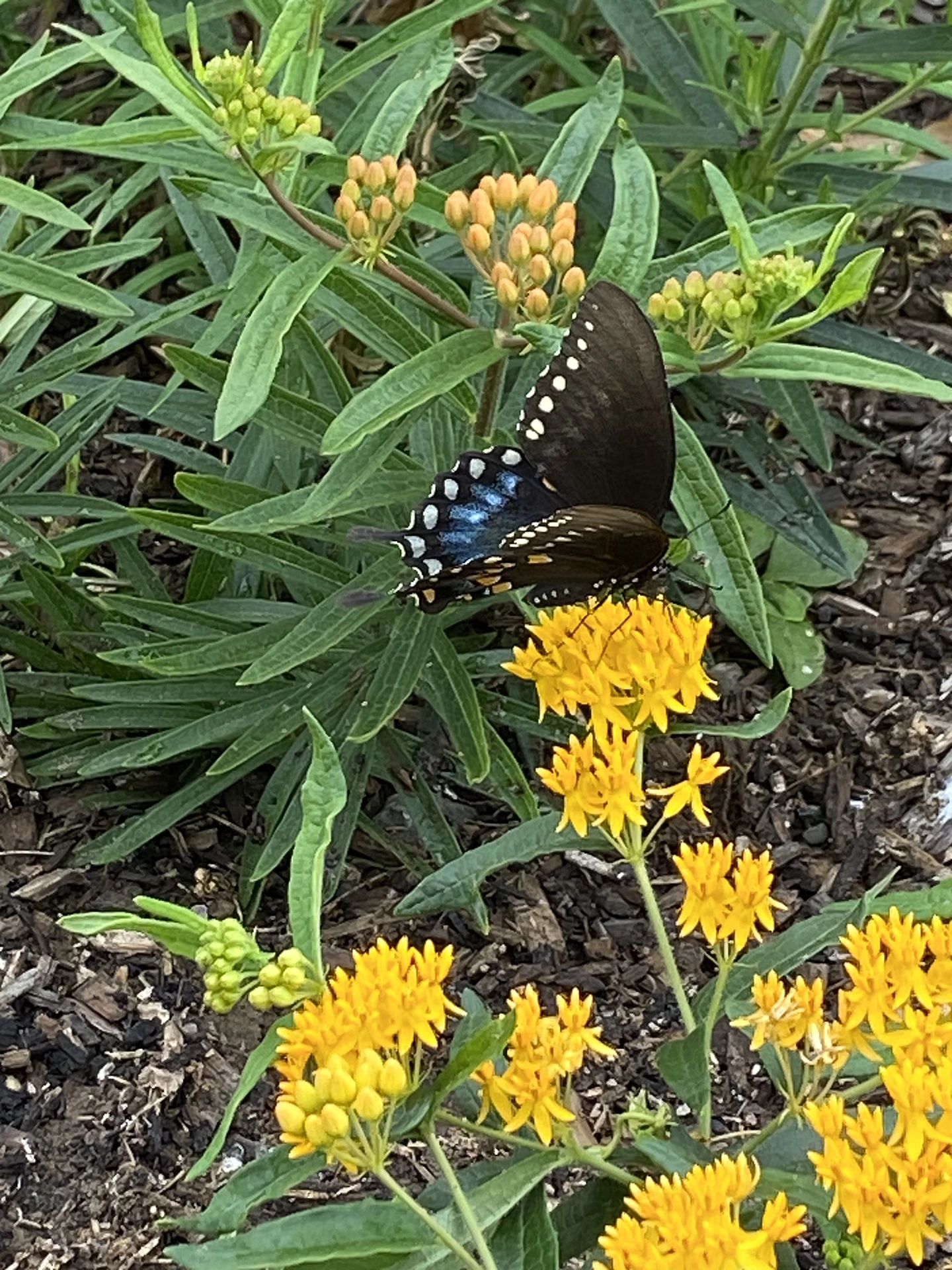 Pollinators get food in the form of energy-rich nectar and protein-rich pollen from the flowers they visit. Pollen clinging to pollinators is carried from one flower to another, allowing the pollinated flowers to develop and produce seed for reproduction.
Pollinators get food in the form of energy-rich nectar and protein-rich pollen from the flowers they visit. Pollen clinging to pollinators is carried from one flower to another, allowing the pollinated flowers to develop and produce seed for reproduction.
What if There Were No Pollinators?
The answer is very simple. Humans would not survive and all land-based ecosystems would collapse! Pollinators are essential because they help flowering plants and trees reproduce. Plants are the foundation of all food webs and ecosystems. Without them, there would be little food.
Did you know that about 85% of our flowering plants depend on pollinators? Without pollinators, we would not have forests, prairies, farms, or gardens.
Why Does Agriculture Needs Pollinators?
Did you know that about 75% of our plant-based food needs pollinators? Wild native bees pollinate our garden and agricultural crops including squash, watermelon, tomatoes, blueberries, sweet peppers, and raspberries. Non-native European honey bees, introduced in the 1600s, are all the same size, shape, and color, resulting in little benefit to natural ecosystems. Their colonial nesting allows them to be kept and transported for crop pollination. Without these honeybees we would not have many crops including almonds, sunflowers, canola, grapes, and apples.
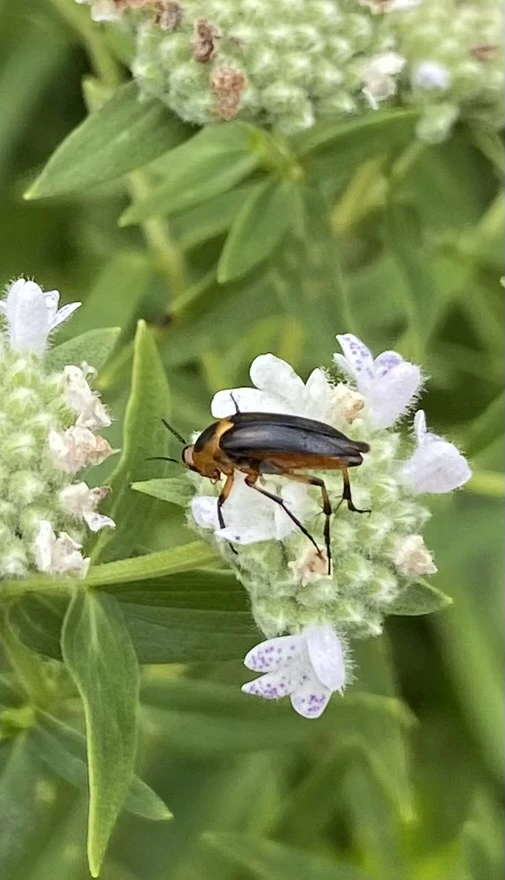 Those Other Pollinators
Those Other Pollinators
Pollinating flies? Yes! First to emerge in spring and staying active until first frost, flies are second only to bees as pollinators. Do you like chocolate? Flies are the main pollinators for the cocoa tree!
Beetles are essential pollinators, too, pollinating nearly 90% of all flowering plants globally. In fact, your house and garden probably wouldn’t exist if not for beetles.
Of course, moths and butterflies, beloved for in their beautiful color, shapes, and sizes, are valuable pollinators in all ecosystems.
Wasps are incidental pollinators. They visit flowers to eat nectar and can transport pollen as they go from flower to flower.
You Can Help Pollinators with Simple Actions!
- Leave the leaves in fall to provide winter shelter
Why? Pollinators hibernate in hollow stems, grasses, bark, dried leaves, seed pods, rocks and hollow logs. Leaving leaves and stems until spring will help pollinators. If you want a leaf-free lawn in the fall, consider leaving leaves and plant stalks at the edge of your lawn until spring.
- Grow a variety of native plants that bloom at different times
Why? Native pollinators need native plants during the entire flowering season. Pollinators and plants evolved together and depend on each other and most feed only on native plants.
- Avoid pesticides and herbicides
Why? Herbicides kill flowering plants pollinators need. Some herbicides can weaken and harm pollinators. Insecticides can directly kill pollinators or cause illness.
Test Your Knowledge with This Short Quiz!
A. Besides bees, what are some other pollinators?
B. True or False: Most bees sting.
C. What percentage of food crops require pollination?
D. True or False: Healthy ecosystems need pollinators.
E. Why are pollinators declining?
Once you have your answers worked out, please visit the Pollinators Quiz Answer Page, to see how many you got right!
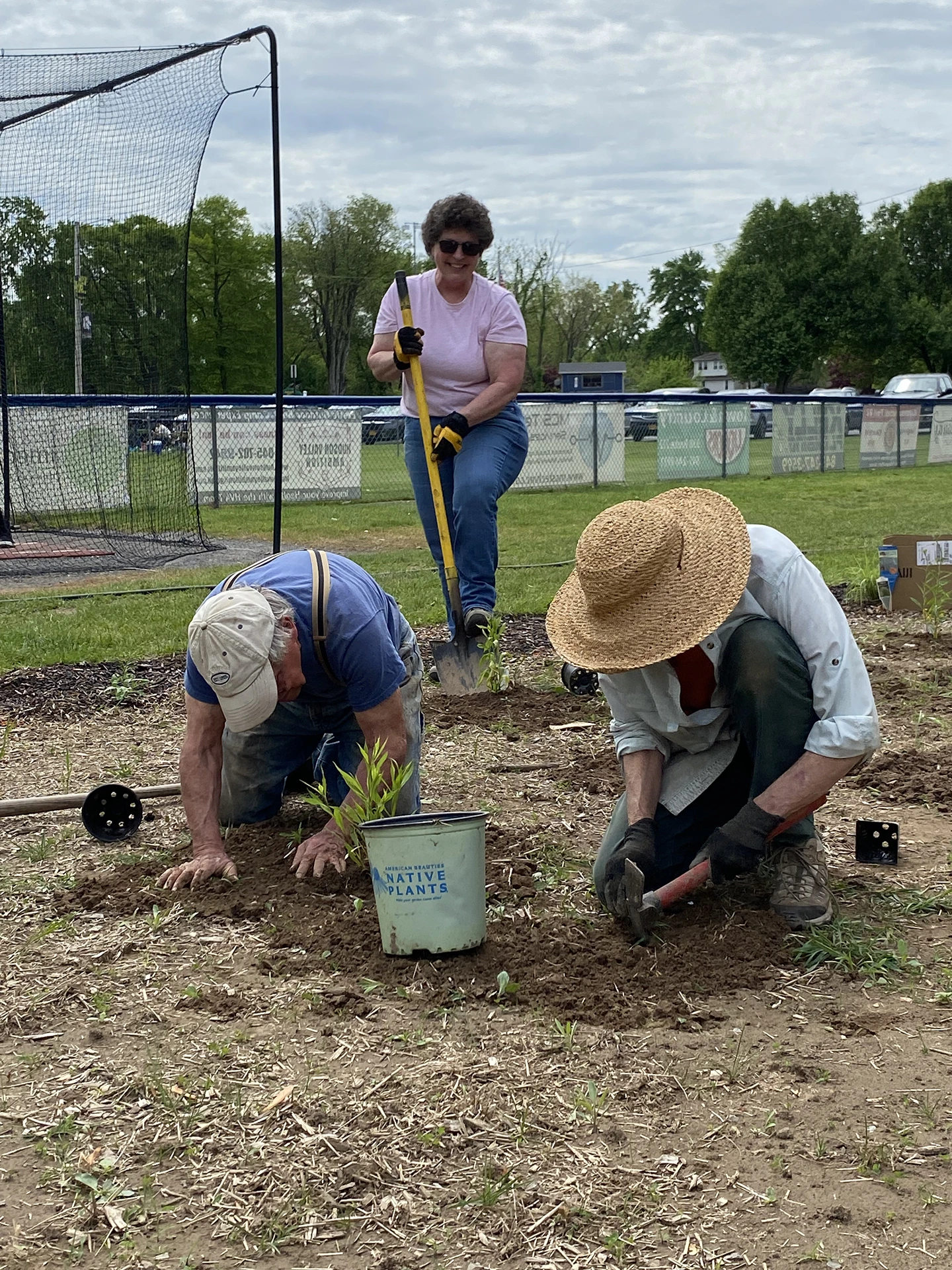 Interested in Volunteering for the Pollinator Meadow?
Interested in Volunteering for the Pollinator Meadow?
Send an email to: saugertiespollinators@gmail.com
Help Pollinators, Using These Resources
Community science projects depend on people to gather and report on their observations. Here are 3 examples of projects you can get involved with:
- The Great Sunflower - https://www.greatsunflower.org/
- Native Bee Community Science Project - https://www.planetbee.org/community-science
- The Bee Conservancy - https://thebeeconservancy.org/citizen-community-science-for-bees/
Additional Resources - General
- Hudson Valley Pollinator Action Guide - https://www.pollinatehv.org/
- Xerces Society Pollinator Conservation Program - https://www.xerces.org/pollinator-conservation
- Cornell College of Agriculture and Life Science Pollinator Network - https://cals.cornell.edu/pollinator-network/ny-bee-diversity
Additional Resources - for Teachers
- Pollinator Partnership - https://www.pollinator.org/pollinator.org/assets/generalFiles/Gardens-Curriculum-2010-one-doc.pdf
- Melinda Vaughn School Pollinator Fund - https://www.schoolpollinators.org/teacher-resources
Additional Photos
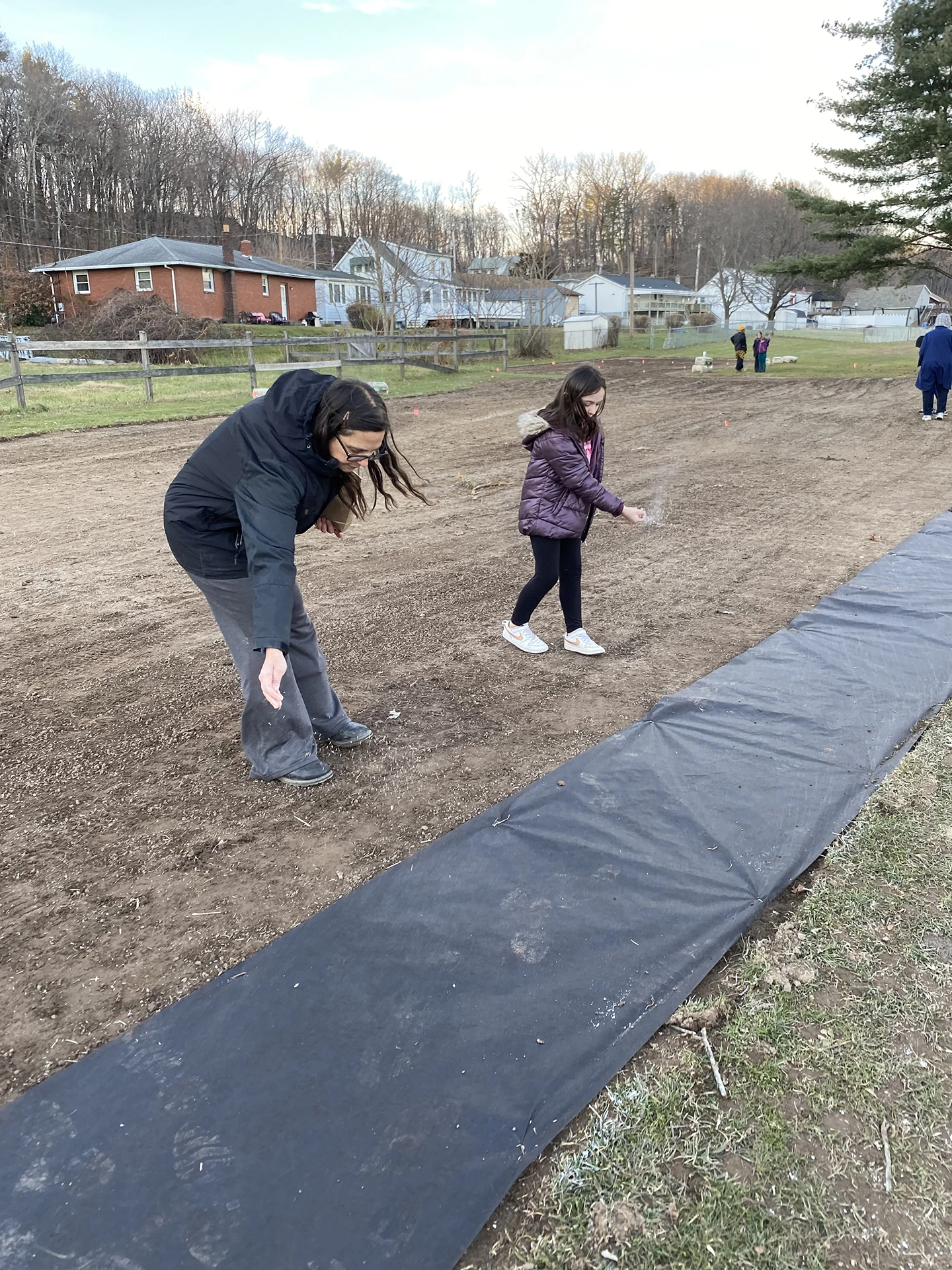
Sewing seeds for the Pollinator Garden.

May 18, 2024 Volunteer Planting Day.
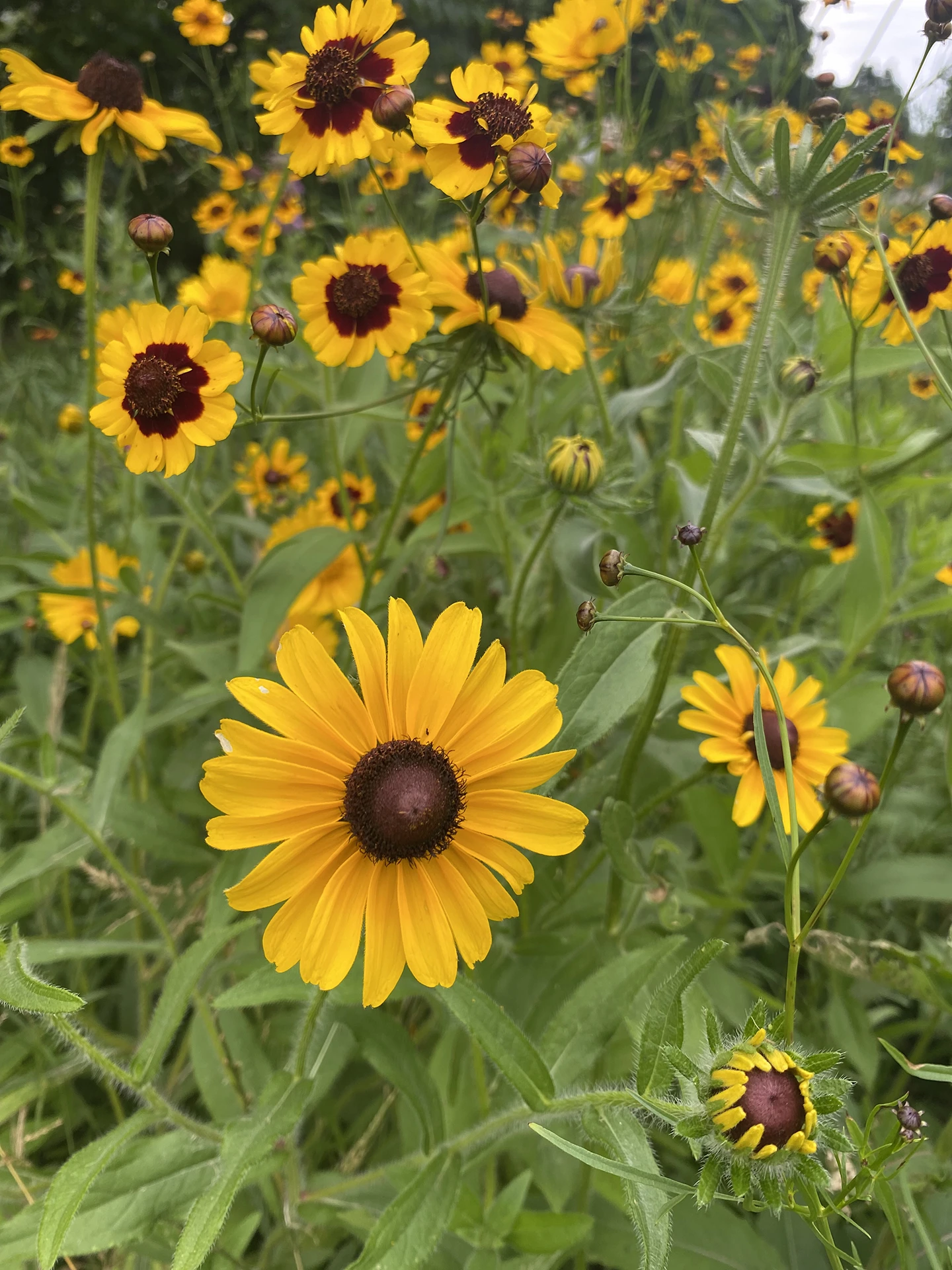
Black-Eyed Susans Close-Up.
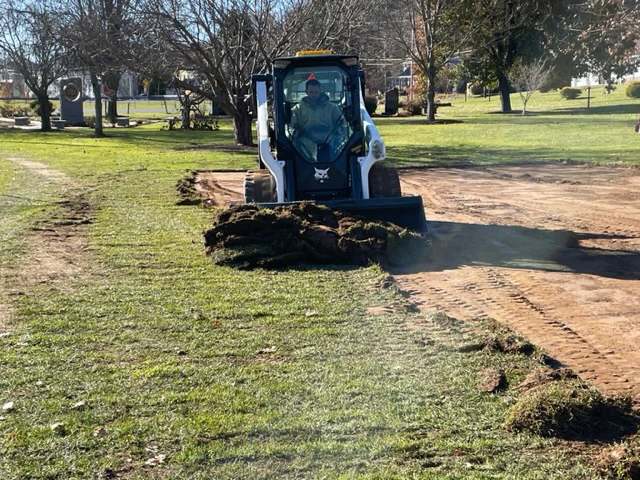
Sod removal for the Pollinator Garden.